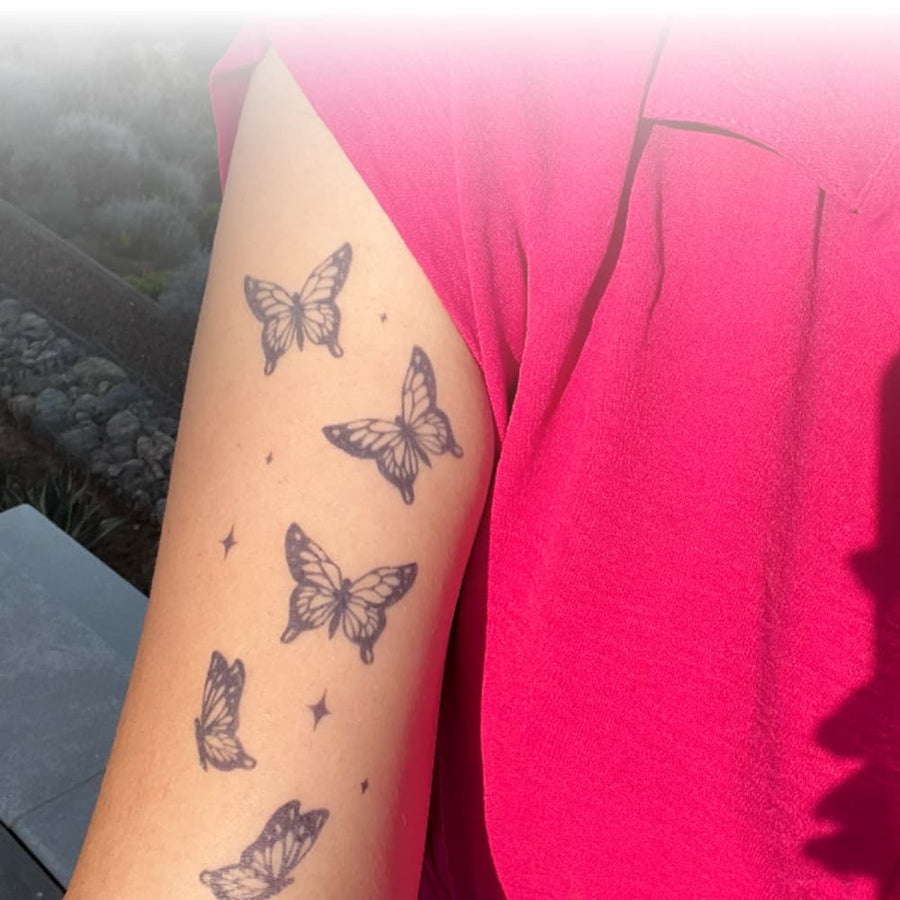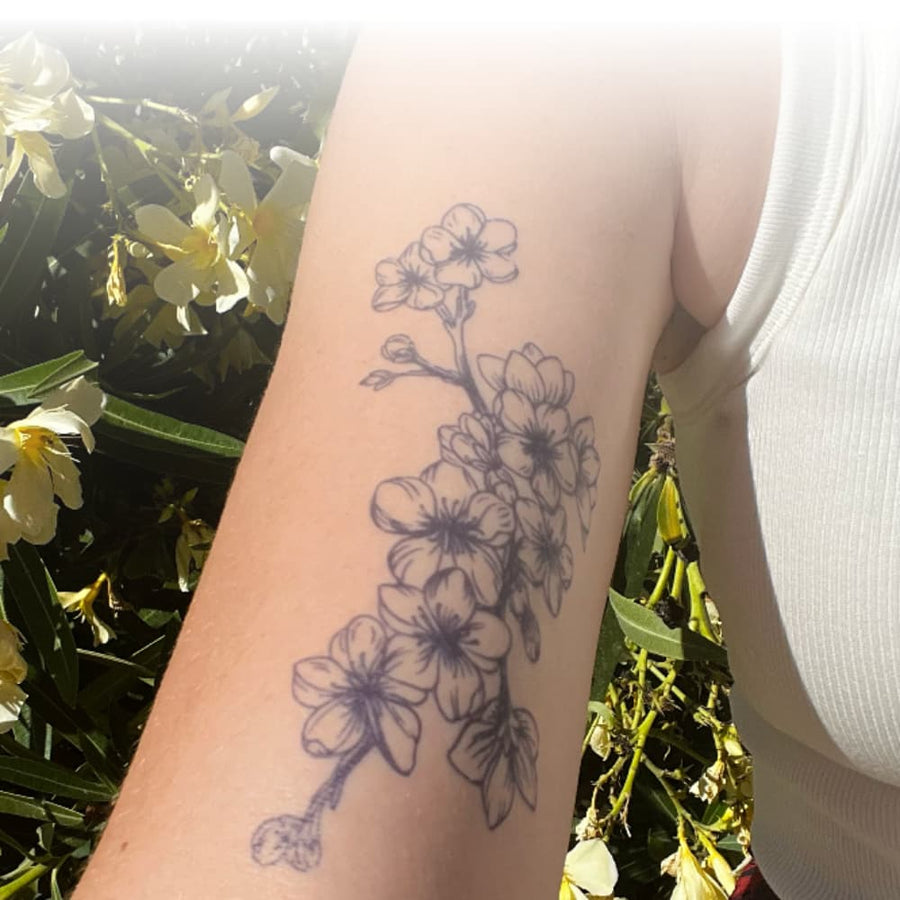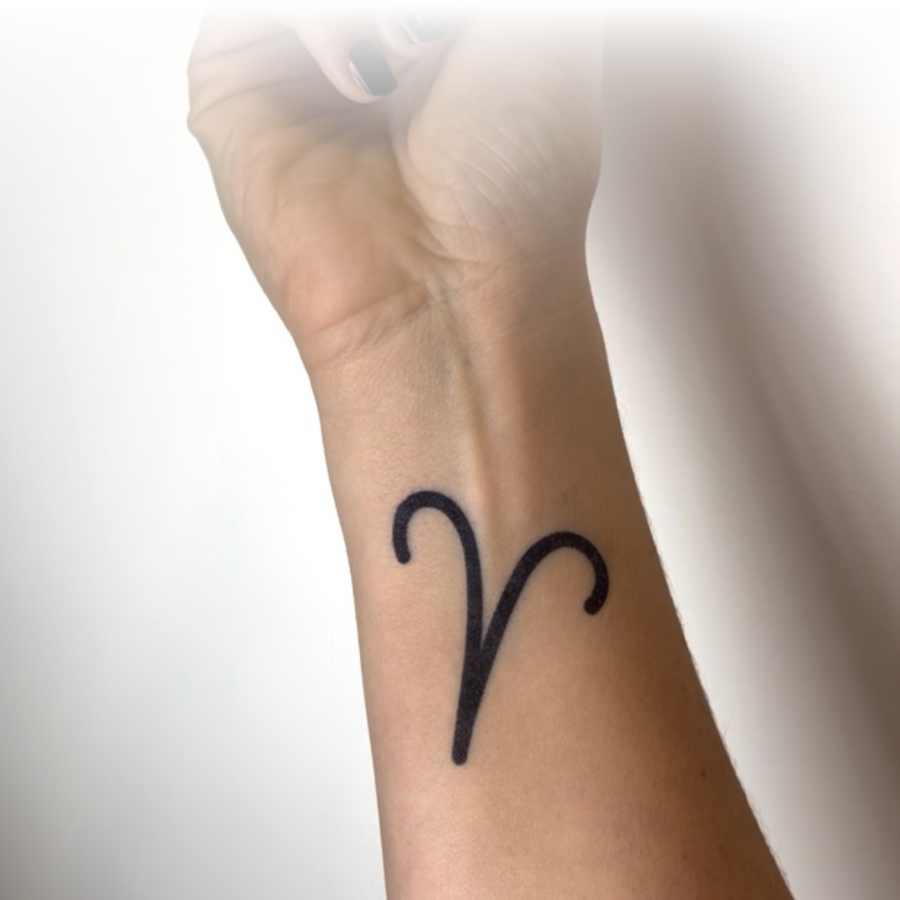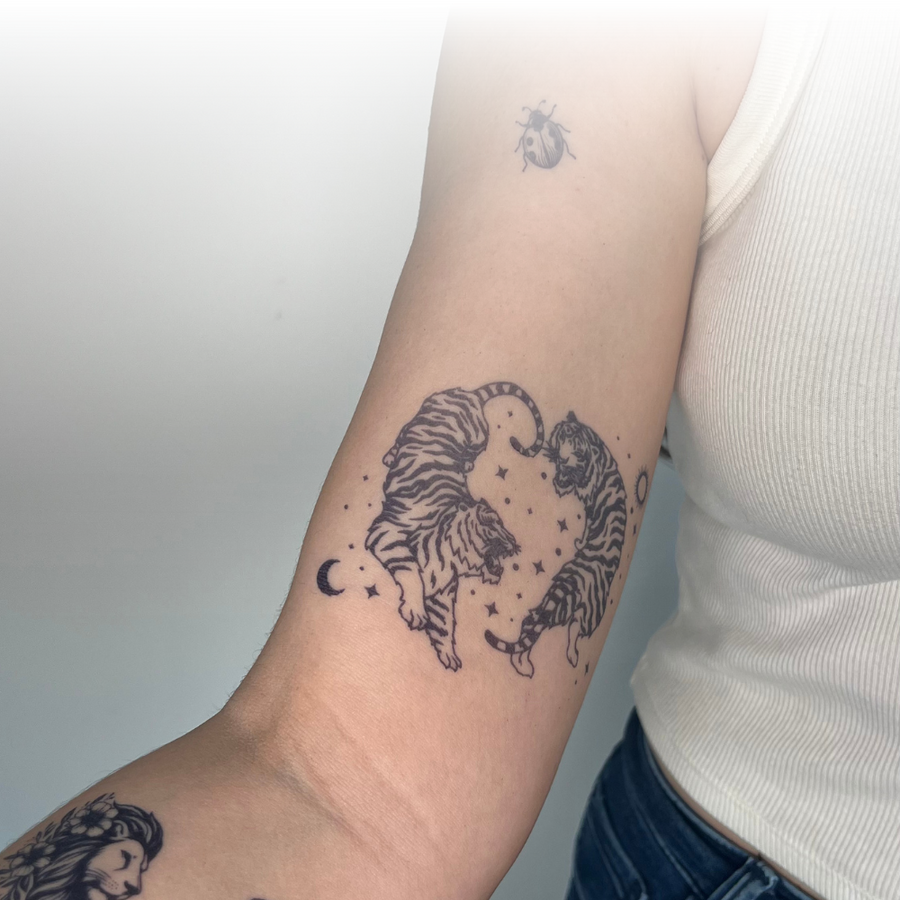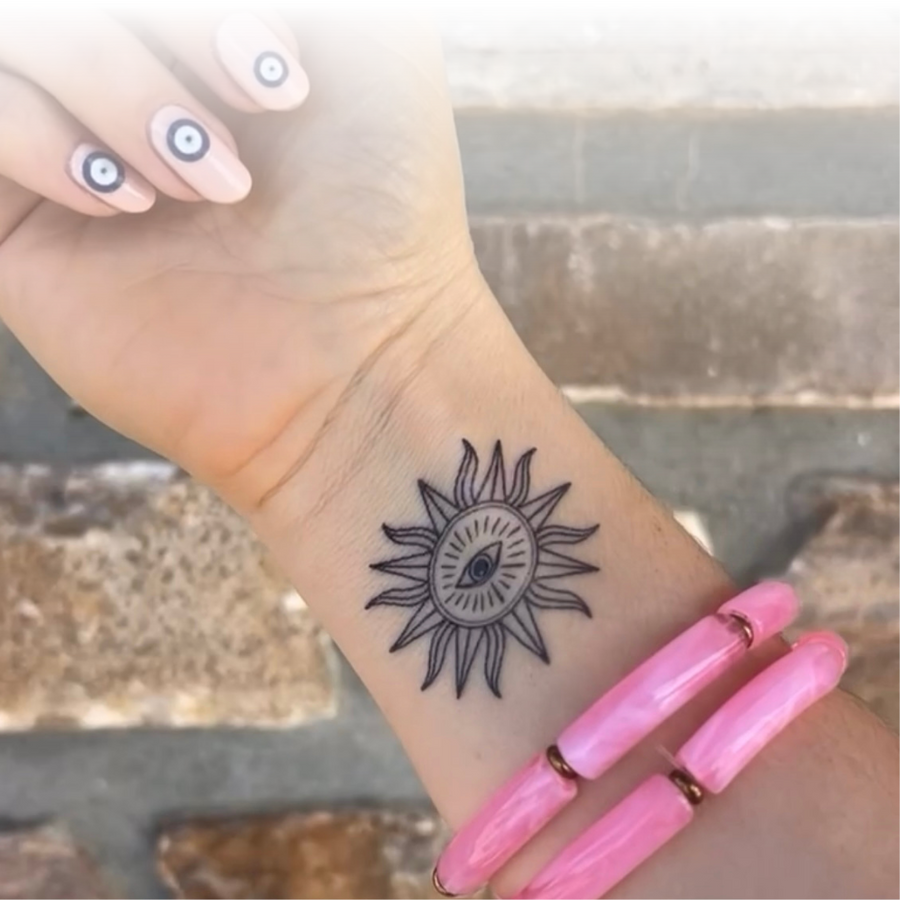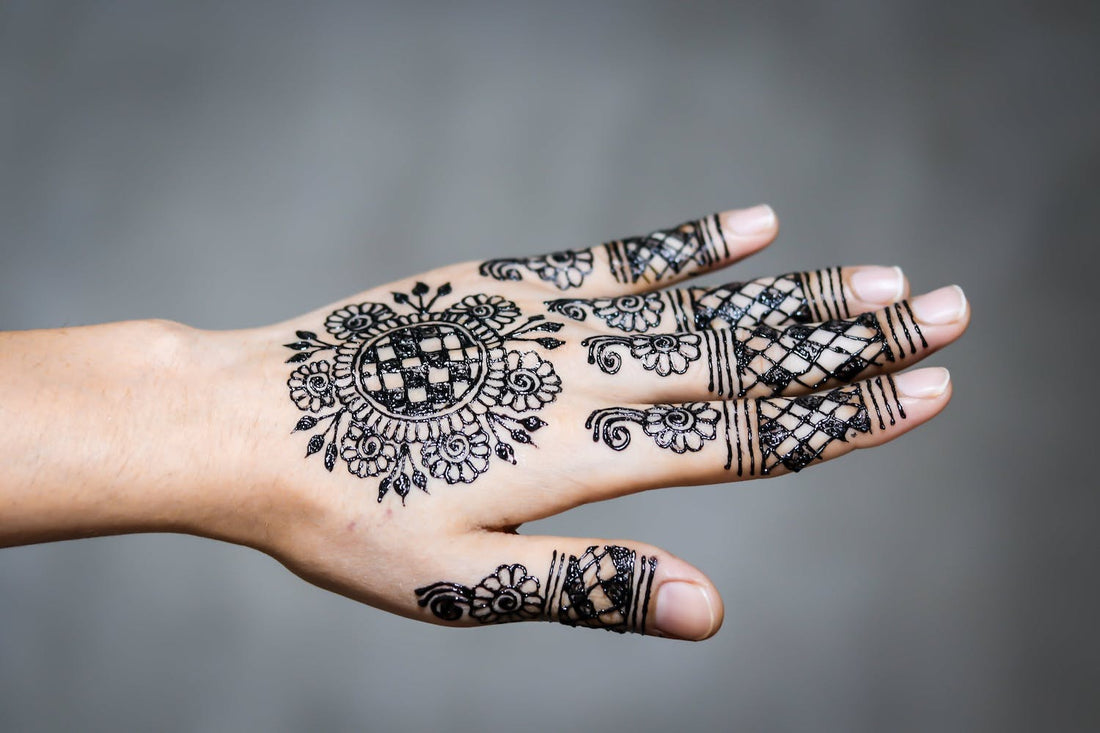In the world of ephemeral tattooing, there are several techniques available to help you choose the type of tattoo that best suits your desires. In this article, we'll look at three popular methods: henna tattooing, decals and semi-permanent ink. Each has its advantages and disadvantages, which we invite you to discover.
Henna tattooing: origin and application
Henna tattooing is an ancestral artistic and ritual practice widespread in many cultures of the Middle East, North Africa and South Asia. The technique involves applying a natural henna-based ink paste to the skin and allowing it to dry for a few hours. The dry paste is then removed, leaving a colorful pattern on the skin that can last up to 2-3 weeks, depending on the care taken and the quality of the ink used.
Advantages of henna tattooing :
- Natural: Henna is a natural pigment derived from the leaves of the Lawsonia inermis plant. It generally contains no chemicals or synthetic preservatives, so its use is less likely to cause allergic reactions than other types of temporary tattoo.
- Customizable and unique: designs created with henna can be highly detailed and elaborate. Each artist has his or her own technique and style, making each tattoo different and unique.
Disadvantages of henna tattooing:
- Time-consuming application: Henna tattoos can take several hours to complete, depending on the complexity of the design. What's more, the paste must be left to dry for at least 4 to 6 hours before being removed to achieve optimum color.
- Limited color: The hue obtained with natural henna varies from orange-brown to mahogany, but does not allow you to obtain the bright or pastel colors possible with other techniques.
-
Banned in France: Since .......

Decals: simplicity and variety
Decals, or self-adhesive temporary tattoos, are pre-printed images on special paper that transfer easily to the skin with a damp cloth. These designs are often sold in sheets or kits, a veritable "prêt-à-tatouer" for every occasion and every style.
Decal advantages :
- Quick and easy: Applying a decal is quick and easy, simply position the design on the skin, lightly dampen the paper and remove. In a matter of seconds, the tattoo is ready, and there's no need to wait for it to dry.
- Variety: Decals are available in a multitude of different designs, colors and styles, so there's something for everyone. There are even fluorescent and metallic tattoos to stand out at parties or special events.
Decal disadvantages :
- Durability: Self-adhesive temporary tattoos generally have a shorter lifespan than other techniques (3-7 days on average), especially if you have to rub or wet the tattooed area regularly.
-
Artificial" look: Decals can look plasticky and less realistic than other types of ephemeral tattoos, which may not suit all tastes.

Semi-permanent ink: between ephemeral and permanent
Semi-permanent ink represents an interesting compromise between temporary and permanent tattoos. It comes in liquid form and is applied with a brush, stencil or directly by hand. This ink is generally water-based and contains semi-permanent color pigments that gradually fade over time, until they disappear completely.
Advantages of semi-permanent ink :
- Durability: Tattoos made with semi-permanent ink can last up to 2-4 weeks, or even longer with appropriate care. They therefore offer an interesting alternative for those wishing to wear a design for a longer period than decals.
-
Varied colors: unlike henna, semi-permanent ink allows you to obtain bright, varied colors, offering more possibilities when it comes to creating a personalized temporary tattoo.

Disadvantages of semi-permanent ink :
- Price: Semi-permanent ink is generally more expensive than other ephemeral options, not least because of the special pigments it contains and the materials required for its application (stencils, brushes, etc.).
-
Appearance time: When first applied, semi-permanent tattoos are transparent and slightly gray. It's only in the hours following application that the tattoo will reveal itself. Generally speaking, it takes 24 to 36 hours for the tattoo to fully reveal its dark blue to black color, depending on skin type.

In conclusion, each of these ephemeral tattooing methods has advantages and disadvantages that need to be weighed up according to your preferences and intended use. Whether you want to try out a design before embarking on a permanent tattoo, express your creativity or simply have fun at a party, there's a technique to suit every situation. Please note, however, that henna-based tattooing is now banned in France due to the risk of allergy. Even if the color isn't the same, it's possible to achieve a similar result with jagua ink for a stunning semi-permanent tattoo.
